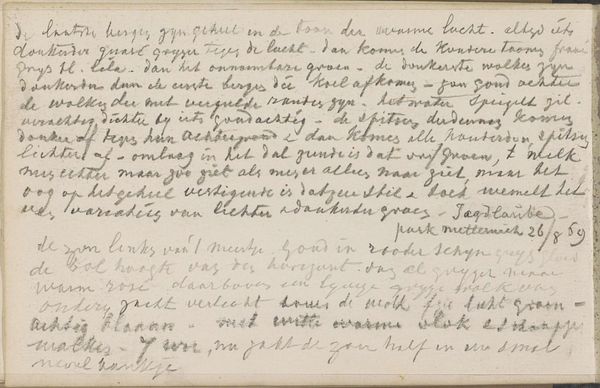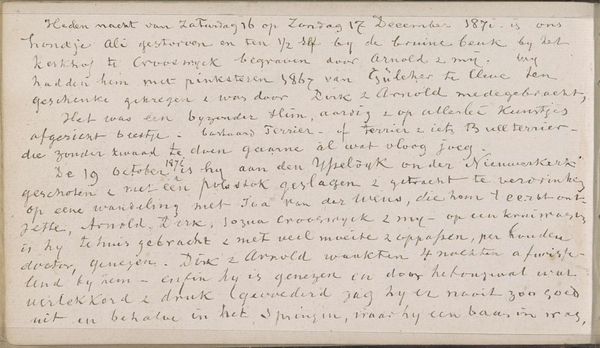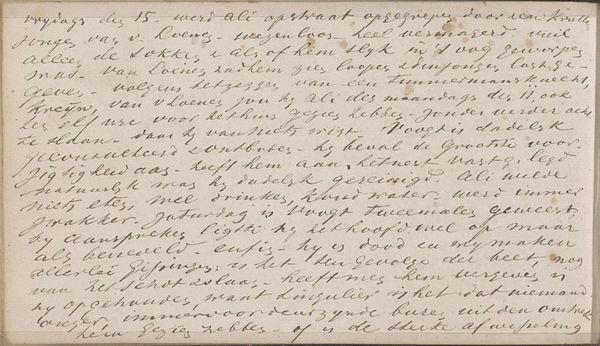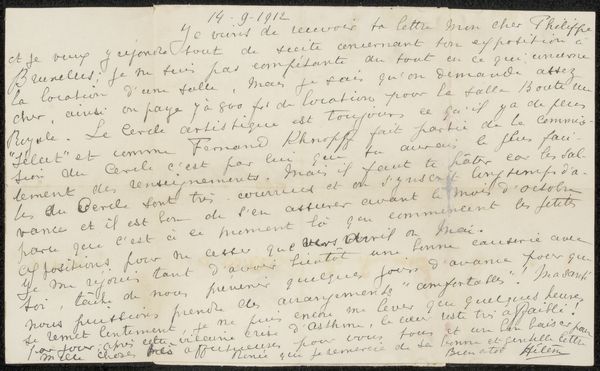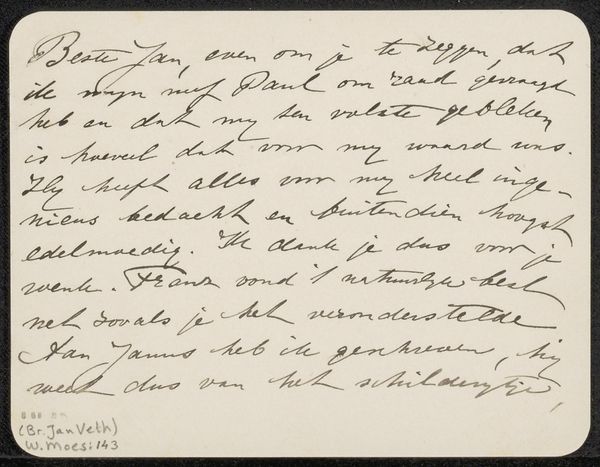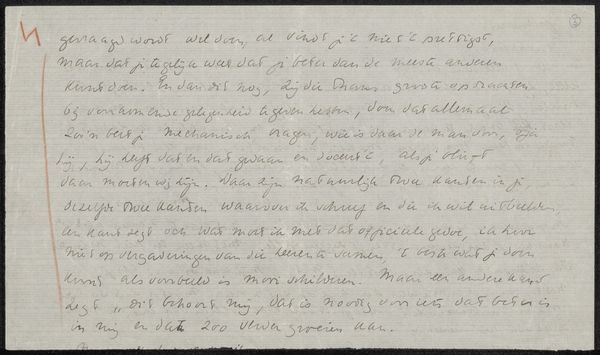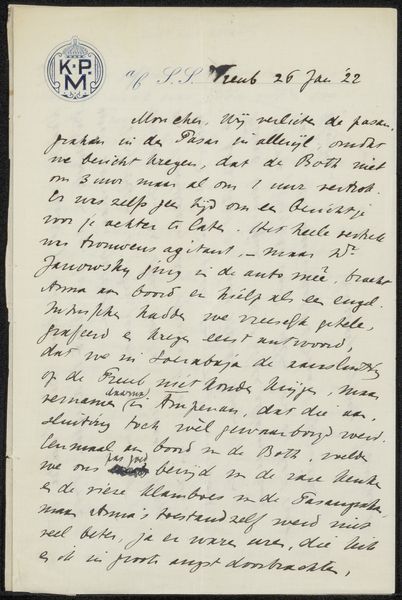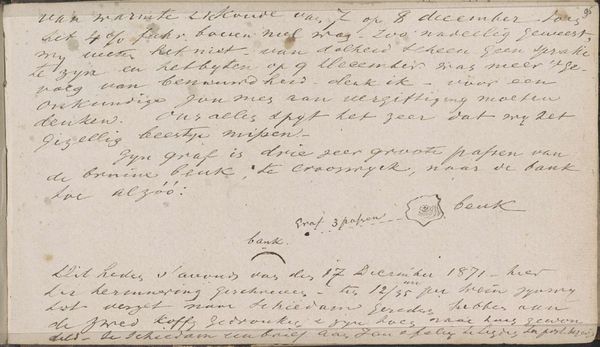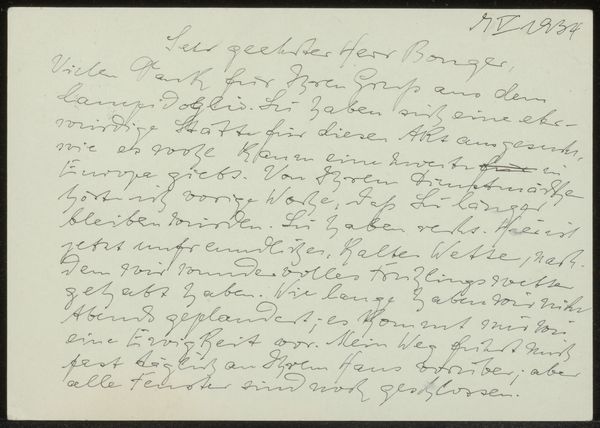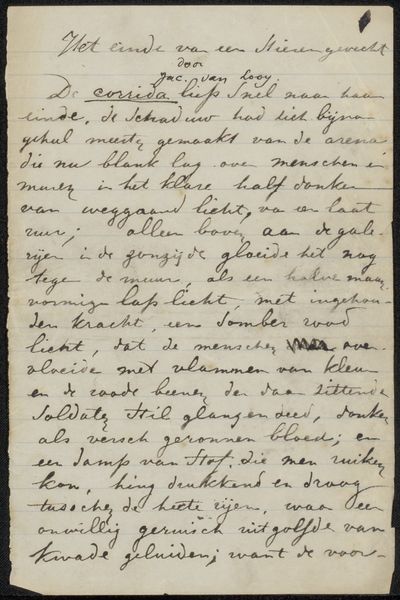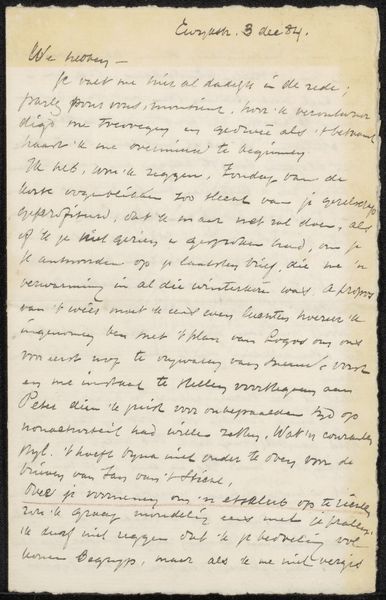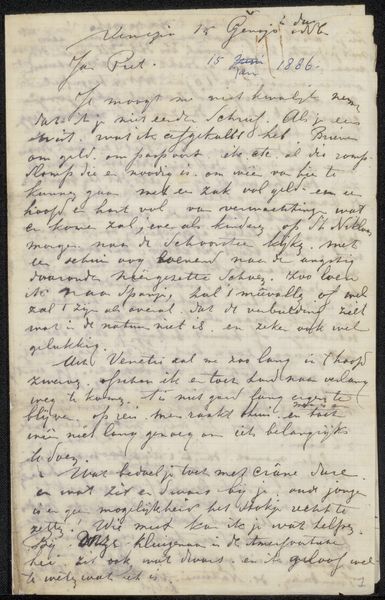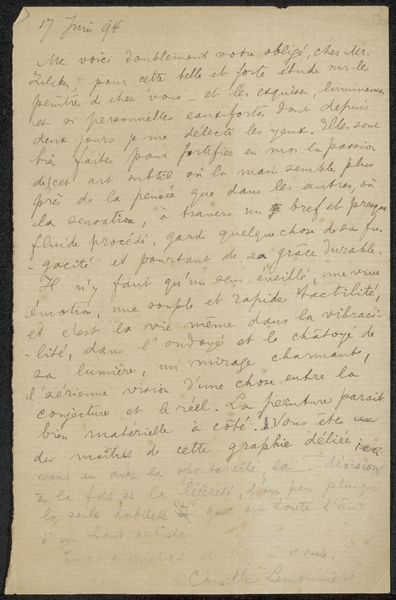
drawing, paper, ink
#
drawing
#
narrative-art
#
dutch-golden-age
#
paper
#
ink
Copyright: Rijks Museum: Open Domain
Editor: Here we have a drawing titled "Vervolg van een verhaal over Tavenraats overleden hond Ali," created in 1871 by Johannes Tavenraat. It’s done in ink on paper and is currently held at the Rijksmuseum. It almost looks like a page from a diary, filled with tight, looping handwriting. The overall effect is rather intimate and melancholic. What do you see in this piece? Curator: This is more than just a diary entry; it's an inscription of grief. The visual density mirrors the weight of memory and loss. Look at the controlled yet frantic strokes of the ink, creating a sense of urgency, almost like a visual outpouring. Notice how Tavenraat carefully chronicles the final days, imbuing the dog, Ali, with symbolic weight, which connects to the universal human experience of mortality. The text itself becomes an emblem of mourning, a tangible representation of intangible emotions. Editor: So the handwriting itself acts as a symbol? Curator: Precisely. Consider how cultures throughout time have used script not only to convey information but to embody ritual, to encapsulate prayer, and to record grief. Tavenraat's script weaves narrative-art within an elegy that attempts to freeze in time his personal trauma and translate it into a potent visual echo of loss. It’s intensely personal, but by visually enshrining it, it seeks an emotional continuity beyond the immediate moment. What do you think that might suggest about how art memorializes something lost? Editor: I hadn’t thought about handwriting as a kind of symbol itself before. I always assumed text was supposed to be primarily communicative, but in this context, I can see how it takes on an emotional weight of its own. Curator: It reveals how closely intertwined the act of creation is with the act of remembering, transforming private emotion into cultural memory. The symbols aren't always overt; sometimes they are embedded in the very act of making.
Comments
No comments
Be the first to comment and join the conversation on the ultimate creative platform.
